Vitnisburður, aðgangur og mat heimilda: bresk skjöl og bandarísk um bankahrunið á Íslandi 2008.
Ártal:
Bls:
DOI:
Hvað segja bresk skjöl og bandarísk um bankahrunið á Íslandi? Í leit að svörum við því verður fyrst vikið að þeim almenna vanda að reglur um leynd yfir nýlegum gögnum hamla rannsóknum. Á hinn bóginn hafa uppljóstranir Wikileaks-samtakanna og óskir um aðgang að skjölum í nafni upplýsingalaga varpað dálítilli birtu inn í myrkviði safnanna. Og hvað kemur þá í ljós? Bæta þær heimildir sem sjást einhverju við þekkingu okkar á orsökum hrunsins á Íslandi 2008? Segja þær eitthvað markvert um afstöðu breskra og bandarískra valdhafa og embættismanna? Má trúa þeim eins og nýju neti? Þarf ekki að vega þær og meta, einkum í ljósi þess að svo margar heimildir eru enn á huldu? Getur jafnvel verið gott að gögn af þessu tagi komi ekki að fullu fyrir almenningssjónir fyrr en að nokkrum tíma liðnum, þegar öldur hefur lægt og menn freistast ekki í eins miklum mæli til að nota og misnota söguna í pólitískum leik?
Accessing and Evualuating British and US Documents on Iceland's Banking Crisis
The financial collapse of autumn 2008 has arguably been the most telling watershed in Icelandic politics, economy and social history since World War II. A great deal of scholarly literature on the collapse has accumulated since then, including input from historians. For them in particular, the parallel issues of closeness in time and restricted access to sources call for concern. This article discusses the challenge to contemporary studies in light of the relatively scarce British and US sources which have become available on the events surrounding 2008. After briefly describing US and British rules on document access in government archives, the article focuses on the classified cables from the US embassy in Reykjavík which were made available in 2010 through the efforts of WikiLeaks. Although these documents do not include top-secret cables, State Department memoranda or various other significant sources, they do shed light on some aspects of the financial catastrophe. Primarily, they indicate a degree of discoordination and inaction within the Icelandic administration, thereby weakening the contention that US authorities were giving Icelanders a cold shoulder when support was most critical — a view occasionally expressed by some Icelandic players in the drama. As for British documents, requests for access which are based on Britain’s Freedom of Information Act provide a mere glimpse into the archives. Assumptions must therefore remain cautious and conditional. Still, the redacted documents viewed so far confirm that after their initial rage, British authorities were convinced that they had secured a reliable obligation by the Icelandic government to cover all British-based deposits in the collapsed bank Landsbanki Íslands. In conclusion, today’s situation regarding both British and US documents leaves us first and foremost unable to write a full history of the collapse using foreign archival sources, as the scanty documentation at hand poses more questions than answers.

